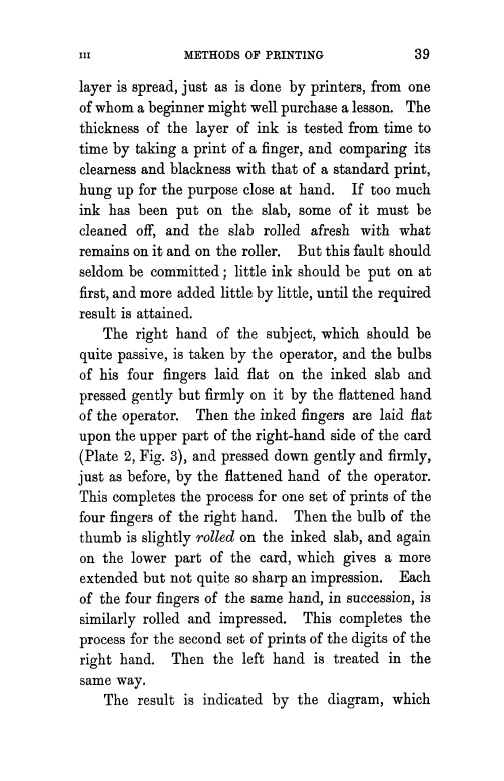| ||||||

OCR Rendition - approximate
III METHODS OF PRINTING 39 layer is spread, just as is done by printers, from one of whom a .beginner might well purchase a lesson. The thickness of the layer of ink is tested from time to time by taking a print of a finger, and comparing its clearness and blackness with that of a standard print, hung up for the purpose close at hand. If too much ink has been put on the slab, some of it must be cleaned off, and the slab rolled afresh with what remains on it and on the roller. But this fault should seldom be committed ; little ink should be put on at first, and more added little by little, until the required result is attained. The right hand of the subject, which should be quite passive, is taken by the operator, and the bulbs of his four fingers laid flat on the inked slab and pressed gently but firmly on it by the flattened hand of the operator. Then the inked fingers are laid flat upon the upper part of the right-hand side of the card (Plate 2, Fig. 3), and pressed down gently and firmly, just as before, by the flattened hand of the operator. This completes the process for one set of prints of the four fingers of the right. hand. Then the bulb of the thumb is slightly rolled on the inked slab, and again on the lower part of the card, which gives a more extended but not quite so sharp an impression. Each of the four fingers of the same hand, in succession, is similarly rolled and impressed. This completes the process for the second set of prints of the digits of the right hand. Then the left hand is treated in the same way. The result is indicated by the diagram, which
|